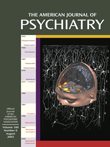Over the past decade, a new class of antipsychotic medications has been introduced into practice. These compounds share a number of clinical and basic characteristics that separate them from the majority of typical antipsychotic medications that were previously available. In comparison with previous antipsychotics, these drugs have been reported to have a reduced propensity to cause extrapyramidal side effects and tardive dyskinesia
(1), to be more effective against negative psychotic symptoms
(2), to improve neurocognitive function and functional outcome
(3), and to be possibly effective in patients who are resistant to other treatments
(4). This exciting profile of new therapeutic effects and reduced side effects caused scientists to investigate potential mechanisms that confer these clinical advantages on these new medications. It is now clear that on a basic, mechanistic level, these compounds share a receptor-blocking profile of less robust dopamine blockade combined with greater serotonin blockade in comparison with standard antipsychotic medications (i.e., dopamine D
2 blockers)
(5).
These newer agents approved by the Food and Drug Administration, including clozapine (the first compound introduced), risperidone, olanzapine, quetiapine, and ziprasidone, have been termed “atypical antipsychotics” or “atypical neuroleptics”
(2). A more mechanistic term is “serotonin-dopamine antagonists”
(6). Although this term accurately captures some of the neurochemical characteristics of these new medications (much like the term “selective serotonin reuptake inhibitors”), it is unclear whether these neurochemical characteristics account for all of the most salient novel features of these medications.
A robust and advantageous alternative to the use of the “atypical antipsychotic” or “serotonin-dopamine antagonist” labels is more consistency with pharmacotherapeutic terminology in other disciplines. This involves labeling these newer agents as “second-generation antipsychotics.” This terminology, which is in common use for drugs such as antibiotics, antihypertensives, contraceptives, anticancer medications, antimigraine medications, anticonvulsants, and antihistamines (e.g., references
7,
8), is used to characterize medications that differ substantially from older agents in terms of clinical effectiveness, reduced side effects, basic mechanisms, or a combination of these factors.
The use of “second-generation” antipsychotic medication terminology offers several advantages over the terms “atypical antipsychotics” and “serotonin-dopamine antagonists,” including the following:
1.
As mentioned, it is more consistent with drug nomenclature in other medical disciplines, which is an important advantage since it places psychiatric medications (and, by extension, psychiatric disorders) in the realm of medical treatments in general.
2.
It allows for the use of the term “third generation” should a newer class of antisychotic medications with important and different clinical and basic profiles be developed.
3.
The term “atypical” has a slightly pejorative and/or confusing connotation, whereas “second generation” carries with it at least a neutral or more likely positive tone, consistent with the advances that these compounds represent. This terminology (which is a means of avoiding stigmatization) is an especially important issue for patients with psychiatric disorders.
4.
“The second-generation” label is not dependent upon or linked to any particular neurochemical mechanism (such as “serotonin-dopamine antagonist”), although it allows for those mechanisms to be elucidated.
A few articles have appeared from researchers, mostly outside the United States, using the terminology we propose (e.g., reference
8), but the moniker “second-generation” is still relatively underused. As outlined
(1–
4), there are clearly profound advantages if investigators and clinicians worldwide adopt the term “second-generation antipsychotic medications” for the group of antipsychotic medications that has been introduced over the past decade.

